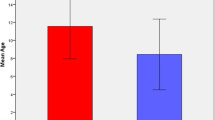Abstract
Helicobacter pylori (HP) infection causes morbidity in several systems, especially in the gastrointestinal tract. The prevalence of disease is inversely related to social-economic and developmental status. It is more common in the developing than in developed countries. In the countries where social-economic status is low, not only HP infection, but also malnutrition and growth failure have a higher prevalence. According to these data, the relationship of nutrition and HP infection is still a question. Does HP infection affect nutritional status? On the contrary, does nutritional status affect HP infection? If so, how? This review was prepared after searching thoroughly almost all of the publications about relationship between HP infections and micronutrients, especially publications pertaining to childhood, from 1990 to 2009 in PubMed. Some valuable adult and experimental publications were also reviewed. These studies related H.pylori to iron, vitamin B12, vitamin C, vitamin A, vitamin E, folate, and selenium. Published studies reveal some evidence that HP has a negative effect on iron, vitamin B12 and vitamin C metabolism, but its influence on others is not clear.
Similar content being viewed by others
References
Opekun AR, Gilger MA, Denyes SM, Nirken MH, Philip SP, Osato MS, et al. Helicobacter pylori infection in children of Texas. J Pediatr Gastroenterol Nutr 2000; 31: 405–410.
Mishra S, Singh V, Rao GR, Dixit VK, Gulati AK, Nath G. Prevalence of Helicobacter pylori in asymptomatic subjects-a nested PCR based study. Infect Genet Evol 2008; 8: 815–819.
Akcam M, Artan R, Gelen T, Yilmaz A, Eren E, Uygun V, et al. Long-term aspects of nodular gastritis in children. Pediatr Int 2007; 49: 220–225.
Windle HJ, Kelleher D, Crabtree JE. Childhood Helicobacter pylori infection and growth impairment in developing countries: a vicious cycle? Pediatrics 2007; 119: e754–759.
Yakoob J, Jafri W, Abid S. Helicobacter pylori infection and micronutrient deficiencies. World J Gastroenterol 2003; 9: 2137–2139.
Cardenas VM, Mulla ZD, Ortiz M, Graham DY. Iron deficiency and Helicobacter pylori infection in the United States. Am J Epidemiol 2006;163: 127–134.
Bardhan PK. Epidemiological features of Helicobacter pylori infection in developing countries. Clin Infect Dis 1997; 25: 973–978.
Akcam M, Ozdem S, Yilmaz A, Gultekin M, Artan R. Serum ferritin, vitamin B(12), folate, and zinc levels in children infected with Helicobacter pylori. Dig Dis Sci 2007; 52: 405–410.
Kurekci AE, Atay AA, Sarici SU, Yesilkaya E, Senses Z, Okutan V, et al. Is there a relationship between childhood Helicobacter pylori infection and iron deficiency anemia? J Trop Pediatr 2005; 51: 166–169.
Seo JK, Ko JS, Choi KD. Serum ferritin and Helicobacter pylori infection in children: a seroepidemiologic study in Korea. J Gastroenterol Hepatol 2002; 17: 754–757.
Süoglu OD, Gökçe S, Saglam AT, Sökücü S, Saner G. Association of Helicobacter pylori infection with gastroduodenal disease, epidemiologic factors and iron-deficiency anemia in Turkish children undergoing endoscopy, and impact on growth. Pediatr Int 2007; 49: 858–863.
Marignani M, Angeletti S, Bordi C, Malagnino F, Mancino C, Delle Fave G, et al. Reversal of longstanding iron deficiency anaemia after eradication of Helicobacter pylori infection. Scand J Gastroenterol 1997; 32: 617–622.
Milman N, Rosenstock SJ, Andersen LP, Jorgensen T, Bonnevie O. The relationship of Helicobacter pylori to iron status-serum ferritin and hemoglobin. A seroepidemiologic survey of 2794 Danes. Ugeskr Laeger 2000; 162: 1564–1567.
Barabino A, Dufour C, Marino CE, Claudiani F, De Alessandri A. Unexplained refractory irondeficiency anemia associated with Helicobacter pylori gastric infection in children: further clinical evidence. J Pediatr Gastroenterol Nutr 1999; 28: 116–119.
Kostaki M, Fessatou S, Karpathios T. Refractory iron-deficiency anaemia due to silent Helicobacter pylori gastritis in children. Eur J Pediatr 2003; 162: 177–179.
Mahalanabis D, Islam MA, Shaikh S, Chakrabarty M, Kurpad AV, Mukherjee S, et al. Haematological response to iron supplementation is reduced in children with asymptomatic Helicobacter pylori infection. Br J Nutr 2005; 94: 969–975.
Annibale B, Capurso G, Martino G, Grossi C, Delle Fave G. Iron deficiency anaemia and Helicobacter pylori infection. Int J Antimicrob Agents 2000; 16: 515–519.
Perez-Perez GI, Israel DA. Role of iron in Helicobacter pylori: its influence in outer membrane protein expression and in pathogenicity. Eur J Gastroenterol Hepatol 2000; 12: 1263–1265.
Annibale B, Capurso G, Lahner E, Passi S, Ricci R, Maggio F, et al. Concomitant alterations in intragastric pH and ascorbic acid concentration in patients with Helicobacter pylori gastritis and associated iron deficiency anaemia. Gut 2003; 52: 496–501.
Scott JM. Bioavailability of vitamin B12. Eur J Clin Nutr 1997; 51(Suppl 1): S49–53.
Rogers LM, Boy E, Miller JW, Green R, Rodriguez M, Chew F, et al. Predictors of cobalamin deficiency in Guatemalan school children: diet, Helicobacter pylori, or bacterial overgrowth? J Pediatr Gastroenterol Nutr 2003; 36: 27–36.
Del Corral A, Carmel R. Transfer of cobalamin from the cobalamin-binding protein of egg yolk to R binder of human saliva and gastric juice. Gastroenterology 1990; 98: 1460–1466.
Annibale B, Lahner E, Bordi C, Martino G, Caruana P, Grossi C, et al. Role of Helicobacter pylori infection in pernicious anaemia. Dig Liver Dis 2000; 32: 756–762.
Varis O, Valle J, Siurala M. Is Helicobacter pylori involved in the pathogenesis of the gastritis characteristic of pernicious anaemia? Comparison between pernicious anaemia relatives and duodenal ulcer relatives. Scand J Gastroenterol 1993; 28: 705–708.
Claeys D, Faller G, Appelmelk BJ, Negrini R, Kirchner T. The gastric H+,K+-ATPase is a major autoantigen in chronic Helicobacter pylori gastritis with body mucosa atrophy. Gastroenterology 1998; 115: 340–347.
Cohen H, Weinstein WM, Carmel R. Heterogeneity of gastric histology and function in food cobalamin malabsorption: absence of atrophic gastritis and achlorhydria in some patients with severe malabsorption. Gut 2000; 47: 638–645.
Goodman KJ, Correa P, Tengana Aux HJ, DeLany JP, Collazos T. Nutritional factors and Helicobacter pylori infection in Colombian children. J Pediatr Gastroenterol Nutr 1997; 25: 507–515.
Banerjee S, Hawksby C, Miller S, Dahill S, Beattie AD, McColl KE. Effect of Helicobacter pylori and its eradication on gastric juice ascorbic acid. Gut 1994; 35: 317–322.
Kim DS, Lee MS, Kim YS, Kim DH, Bae JM, Shin MH, et al. Effect modification by vitamin C on the relation between gastric cancer and Helicobacter pylori. Eur J Epidemiol 2005; 20: 67–71.
Ruiz B, Rood JC, Fontham ET, Malcom GT, Hunter FM, Sobhan M, et al. Vitamin C concentration in gastric juice before and after anti-Helicobacter pylori treatment. Am J Gastroenterol 1994; 89: 533–539.
Woodward M, Tunstall-Pedoe H, McColl K. Helicobacter pylori infection reduces systemic availability of dietary vitamin C. Eur J Gastroenterol Hepatol 2001; 13: 233–237.
Zhang ZW, Patchett SE, Perrett D, Katelaris PH, Domizio P, Farthing MJ. The relation between gastric vitamin C concentrations, mucosal histology, and CagA seropositivity in the human stomach. Gut 1998; 43: 322–326.
Waring AJ, Drake IM, Schorah CJ, White KL, Lynch DA, Axon AT, et al. Ascorbic acid and total vitamin C concentrations in plasma, gastric juice, and gastrointestinal mucosa: effects of gastritis and oral supplementation. Gut 1996; 38: 171–176.
Capurso G, Ricci R, Panzuto F, Baccini F, Passi S, Di Giulio E, et al. Intragastric ascorbic but not uric acid is depleted in relation with the increased pH in patients with atrophic body gastritis and H. pylori gastritis. Helicobacter 2003; 8: 300–306.
Perez-Perez GI, Israel DA. Role of iron in Helicobacter pylori: its influence in outer membrane protein expression and in pathogenicity. Eur J Gastroenterol Hepatol 2000; 12: 1263–1265.
Park JH, Kim SY, Kim DW, Lee WG, Rhee KH, Youn HS. Correlation between Helicobacter pylori infection and vitamin C levels in whole blood, plasma, and gastric juice, and the pH of gastric juice in Korean children. J Pediatr Gastroenterol Nutr 2003; 37: 53–62.
Chuang CH, Sheu BS, Kao AW, Cheng HC, Huang AH, Yang HB, et al. Adjuvant effect of vitamin C on omeprazole-amoxicillin-clarithromycin triple therapy for Helicobacter pylori eradication. Hepatogastroenterology 2007; 54: 320–324.
Tsugane S, Kabuto M, Imai H, Gey F, Tei Y, Hanaoka T, et al. Helicobacter pylori, dietary factors, and atrophic gastritis in five Japanese populations with different gastric cancer mortality. Cancer Causes Control 1993; 4: 297–305.
Zhang ZW, Patchett SE, Perrett D, Domizio P, Farthing MJ. Gastric alpha-tocopherol and beta-carotene concentrations in association with Helicobacter pylori infection. Eur J Gastroenterol Hepatol 2000; 12: 497–503.
Hep A, Pospisilova J, Dolina J, Prasek J, Dite P. Levels of vitamins A, E and C in serum and gastric juice in relation to gastric mucosa and occurrence of Helicobacter pylori. Vnitr Lek 1998; 44: 396–399.
Sies H, Stahl W. Vitamins E and C, beta-carotene, and other carotenoids as antioxidants. Am J Clin Nutr 1995; 62(Suppl 6): 1315S–1321S.
Chatterjee A, Bagchi D, Yasmin T, Stohs SJ. Antimicrobial effects of antioxidants with and without clarithromycin on Helicobacter pylori. Mol Cell Biochem 2005; 270: 125–130.
Oh TY, Yeo M, Han SU, Cho YK, Kim YB, Chung MH, et al. Synergism of Helicobacter pylori infection and stress on the augmentation of gastric mucosal damage and its prevention with alpha-tocopherol. Free Radic Biol Med 2005; 38: 1447–1457.
Sugimoto N, Yoshida N, Nakamura Y, Ichikawa H, Naito Y, Okanoue T, et al. Influence of vitamin E on gastric mucosal injury induced by Helicobacter pylori infection. Biofactors 2006; 28: 9–19.
Gilbert JV, Rmakrishna J, Sunderman FW, Wright A, Plaut AG. ProteinHpn: cloning and characterization of a histidinerich metal-binding polypeptide in Helicobacter pylori and Helicobacte mustelae. Infect Immun 1995; 63: 2682–2688.
Zullo A, Rinaldi V, Efrati C, Hassan C, Caroli S, Riggio O, et al. Zinc, ammonia, and Helicobacter pylori infection in liver cirrhosis. Dig Liver Dis 2000; 32: 836–838.
Burguera JL, Villasmil LM, Burguera M, Carrero P, Rondon C, de Abel de la Cruz AM, et al. Gastric tissue selenium levels in healthy persons, cancer and non-cancer patients with different kinds of mucosal damage. J Trace Elem Med Biol 1995; 9:160–164.
Scieszka M, Danch A, Machalski M, Drózdz M. Plasma selenium concentration in patients with stomach and colon cancer in the Upper Silesia. Neoplasma 1997; 44: 395–397.
Üstündag Y, Boyacioglu S, Haberal A, Demirhan B, Bilezikçi B. Plasma and gastric tissue selenium levels in patients with Helicobacter pylori infection. J Clin Gastroenterol 2001; 35: 405–408.
Sjunnesson H, Sturegard E, Willen R, Wadstrom T. High intake of selenium, beta-carotene, and vitamins A, C, and E reduces growth of Helicobacter pylori in the guinea pig. Comp Med 2001; 51: 418–423.
Author information
Authors and Affiliations
Corresponding author
Rights and permissions
About this article
Cite this article
Akçam, M. Helicobacter pylori and micronutrients. Indian Pediatr 47, 119–126 (2010). https://doi.org/10.1007/s13312-010-0017-2
Published:
Issue Date:
DOI: https://doi.org/10.1007/s13312-010-0017-2




